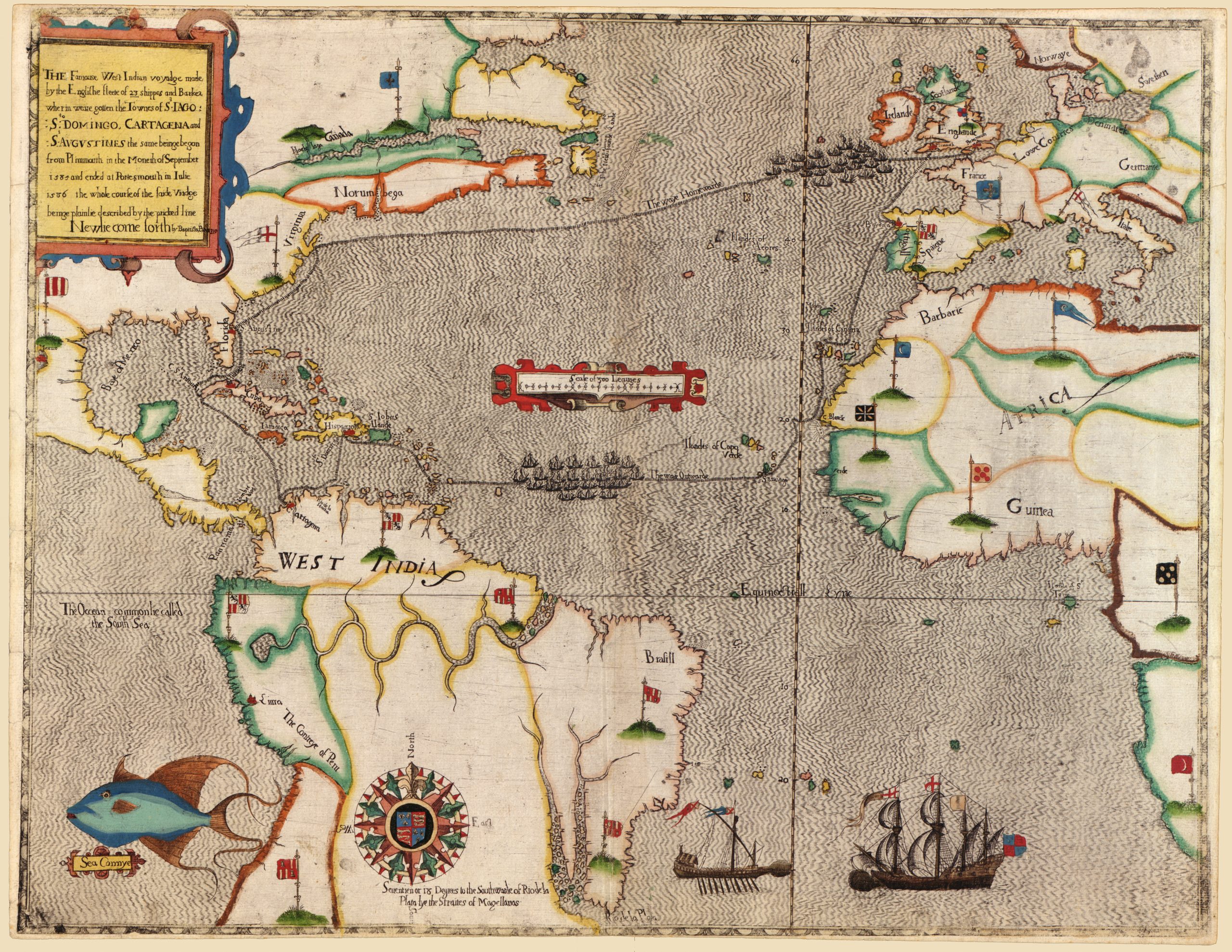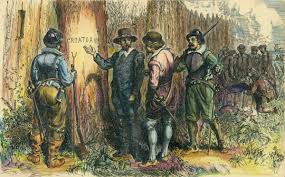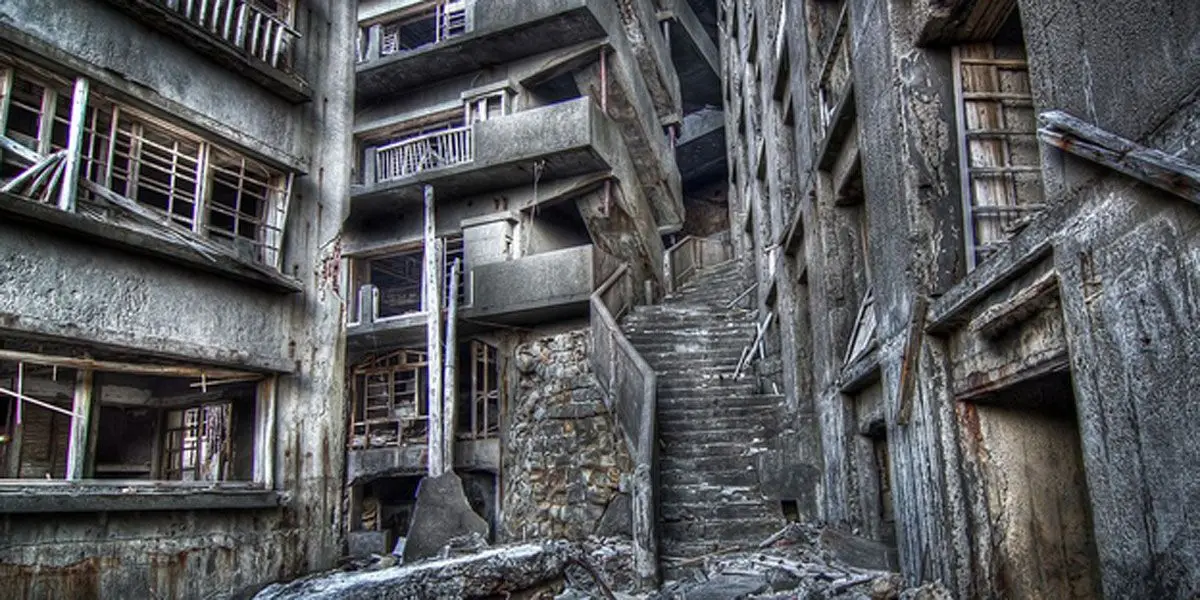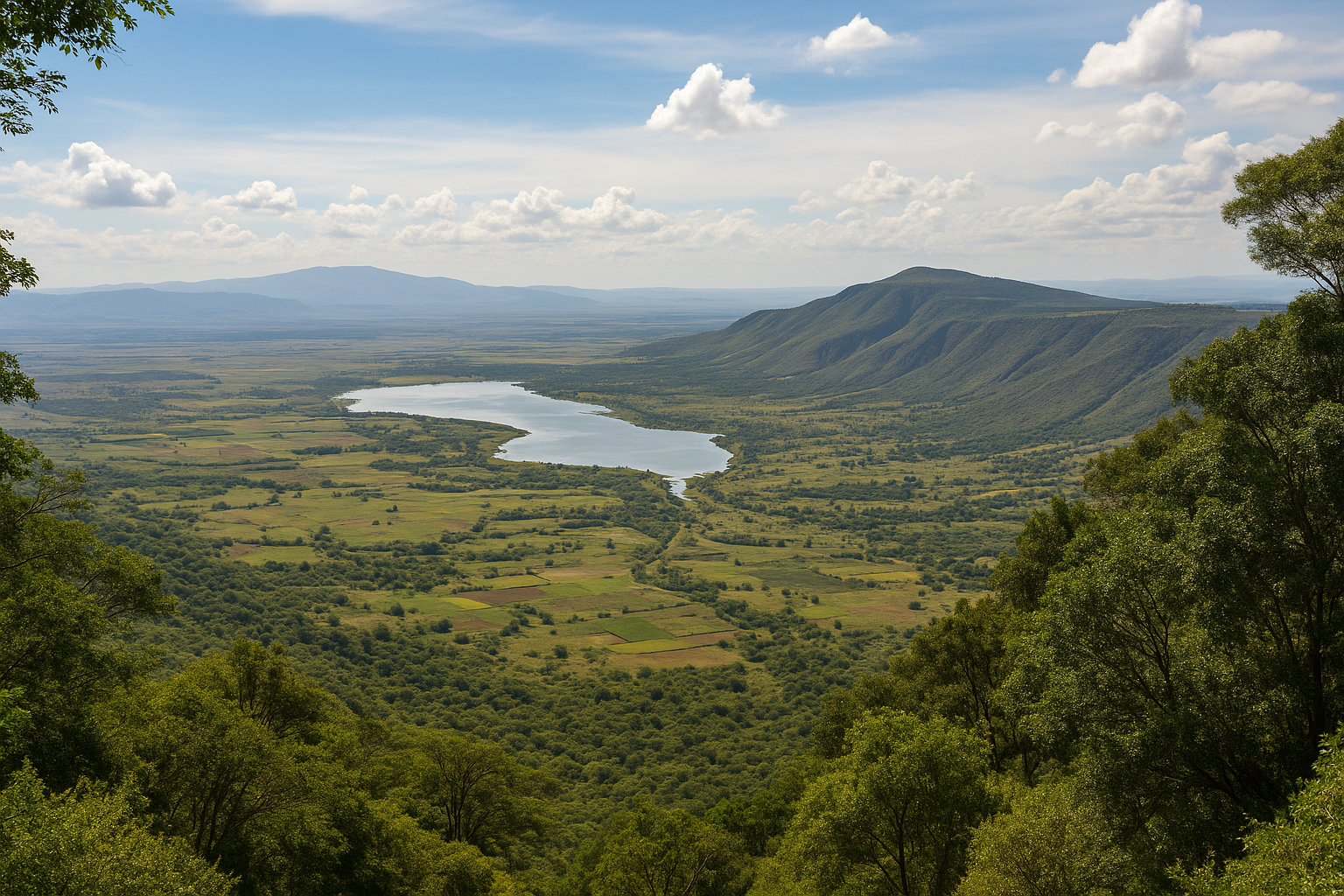
The Great Rift Valley
The Great Rift Valley in Kenya and Tanzania is part of a massive geological feature that extends from Lebanon in the Middle East down to Mozambique in southeastern Africa. The East African section, especially through Kenya and Tanzania, is one of the most geologically and ecologically dynamic areas on Earth.
🟤 How the Great Rift Valley Began
-
Origin (~25–30 million years ago):
-
The Rift Valley began forming due to tectonic plate activity—specifically the divergence of the African Plate into two smaller plates:
-
The Nubian Plate (west)
-
The Somali Plate (east)
-
-
As these plates slowly move apart, cracks (faults) in the Earth’s crust formed, creating rift valleys, volcanoes, and earthquakes.
-
🔵 What Has Been Happening Since Then
-
Volcanic Activity:
-
Many volcanoes have formed and some remain active, such as Mount Longonot, Ol Doinyo Lengai (Tanzania), and Mount Meru.
-
Volcanic soils in the region are very fertile, which benefits agriculture.
-
-
Seismic Activity:
-
The region is prone to earthquakes, especially around rift zones.
-
These are mostly minor, but they are a sign that the rift is still actively pulling apart.
-
-
Formation of Lakes:
-
The rift has created long, deep lakes, such as:
-
Lake Turkana
-
Lake Naivasha
-
Lake Tanganyika
-
Lake Manyara
-
Lake Natron
-
-
These lakes are often alkaline or saline, and some are homes to unique species like flamingos.
-
-
Human Evolution:
-
The Rift Valley is a key site in paleoanthropology—many early human fossils (e.g., Australopithecus, Homo habilis) were found here, especially in Olduvai Gorge (Tanzania) and Turkana Basin (Kenya).
-
-
Ecological Diversity:
-
The valley supports unique ecosystems and national parks like:
-
Ngorongoro Crater
-
Serengeti
-
Amboseli
-
Hell’s Gate
-
-
🟢 Current Situation (Present Day)
-
The Rift Valley is still active—the tectonic plates continue to move apart at about 6–7 mm per year.
-
The region experiences:
-
Ongoing faulting
-
Minor earthquakes
-
Occasional volcanic eruptions
-
-
In 2018, a large crack appeared in Narok County, Kenya, due to sudden ground movement, sparking public attention to the rift’s activity.
🔮 Possible Future Outcomes
-
Africa Splitting:
-
If rifting continues for millions of years, East Africa may split from the rest of the continent, forming a new ocean.
-
The area between Ethiopia, Kenya, and Tanzania could become a separate landmass.
-
-
Increased Earthquakes/Volcanism:
-
As the rift widens, expect more volcanic eruptions and earthquakes in the region.
-
-
Changes in Ecosystems:
-
Changes in topography and climate may impact wildlife habitats, rivers, and human settlement.
-
-
Geothermal Energy:
-
Countries like Kenya are increasingly harnessing geothermal power from the Rift Valley to produce electricity.
-
Summary Table
| Aspect | Description |
|---|---|
| Start | 25–30 million years ago |
| Cause | Tectonic rifting (Nubian and Somali plates diverging) |
| Current Activity | Faulting, earthquakes, volcanic eruptions |
| Ecological Role | Lakes, wildlife, fertile lands, biodiversity |
| Future Outlook | Potential formation of a new ocean; increased seismic activity; more energy opportunities |
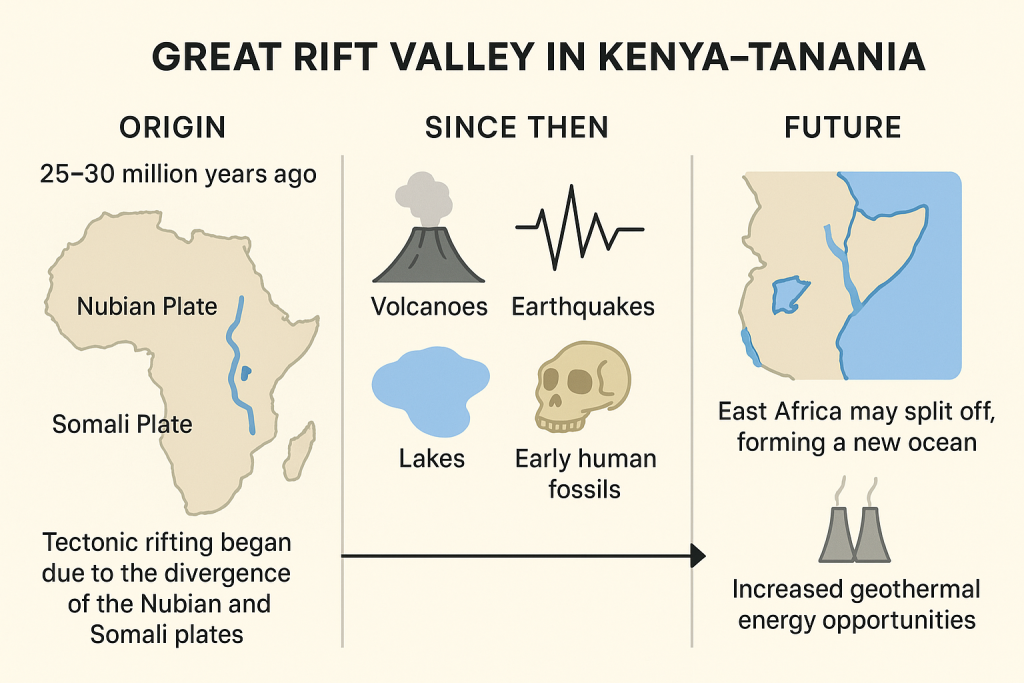
Is there mass harm that Great Rift Valley has caused to human since began its formation?
There is no direct historical record of human deaths caused during the initial formation of the Great Rift Valley, and here’s why:
🕰️ Timeline Context
-
The formation of the Great Rift Valley began about 25 to 30 million years ago.
-
Humans (genus Homo) did not exist yet—our earliest ancestors appeared only around 2–3 million years ago.
-
Even earlier hominins like Australopithecus came around 4 million years ago, long after rifting had already begun.
🧬 Before Human Beings Existed
-
The geological processes that formed the rift—like tectonic shifts, volcanic eruptions, and earthquakes—would have dramatically altered the landscape.
-
These events likely impacted animal life, but there were no humans to witness or be harmed by the early rift formation.
🧍♂️ After Humans Appeared
-
By the time early humans settled in the Rift Valley region (especially in areas like Olduvai Gorge, Turkana Basin), the rift was already a distinct valley.
-
While localized earthquakes or volcanic eruptions in more recent history could have caused deaths, these would be individual events, not tied to the original rifting process.
-
For example:
-
Volcanic eruptions like Ol Doinyo Lengai (Tanzania) might have caused local harm, but not on a large or recorded scale in ancient times.
-
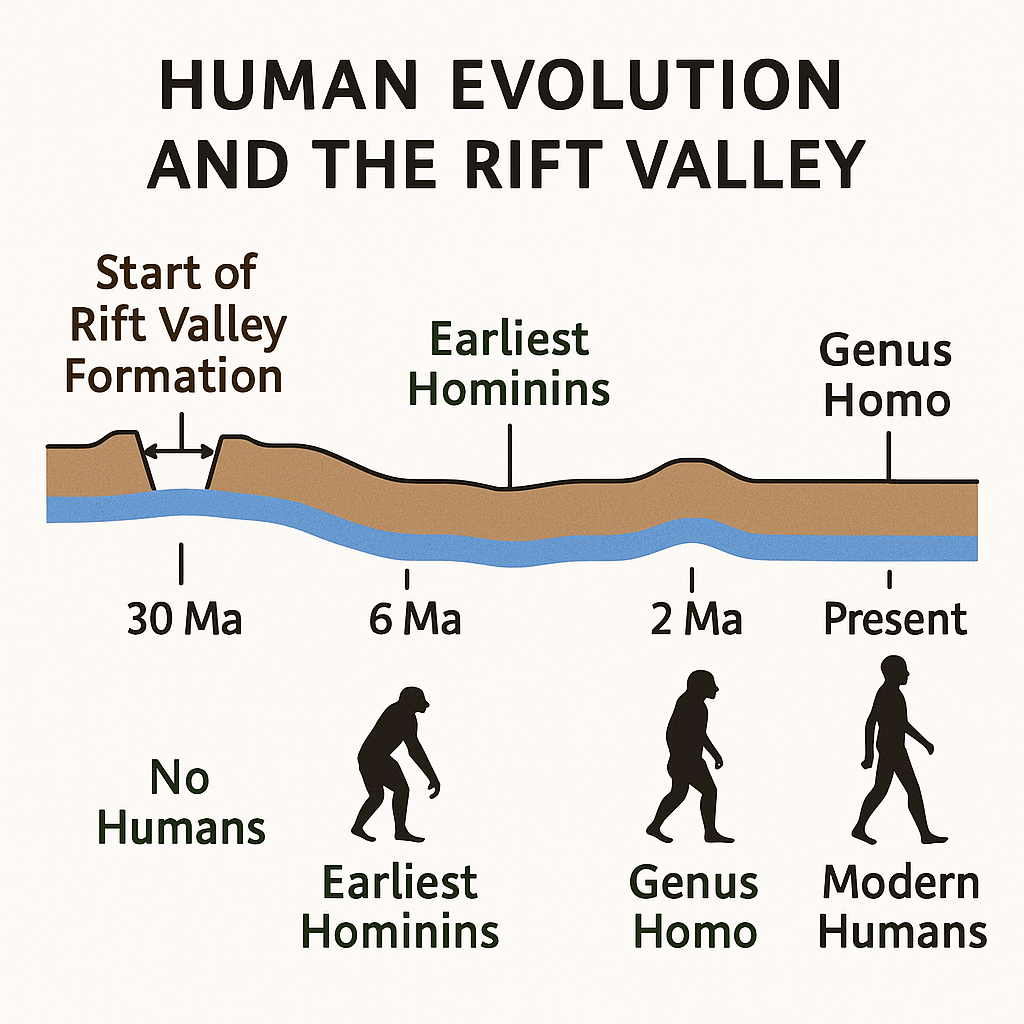
How the communities along Great Rift Valley benefit from its formation
The communities living around the Rift Valley in Kenya and Tanzania benefit in many ways—geologically, economically, ecologically, and culturally. Here are the key benefits they gain from the Rift Valley’s formation:
🌋 1. Fertile Soil for Agriculture
-
Volcanic soils (like around Mount Longonot, Mount Meru) are rich in minerals, making them excellent for farming.
-
Crops like maize, beans, potatoes, vegetables, and horticultural produce grow well.
-
Regions like Naivasha, Nakuru, Arusha, and Mbeya are major farming hubs.
🔥 2. Geothermal Energy
-
Kenya especially benefits from geothermal power plants in places like:
-
Olkaria (in Naivasha)
-
Menengai (in Nakuru)
-
-
Geothermal is a renewable, clean energy source that provides:
-
Electricity to the national grid
-
Jobs for locals
-
Industrial development opportunities
-
🐘 3. Tourism and Wildlife Conservation
-
Rift Valley hosts national parks and reserves like:
-
Lake Nakuru National Park
-
Hell’s Gate
-
Ngorongoro Crater
-
Serengeti
-
-
Tourists come to see:
-
Wildlife (e.g., flamingos, elephants, lions)
-
Scenic landscapes and lakes
-
Great Migration and birdwatching
-
-
This boosts the local economy through:
-
Park fees
-
Employment in lodges and tour companies
-
Handicrafts and cultural shows
-
💧 4. Freshwater and Fishing
-
Rift lakes like:
-
Lake Naivasha (freshwater)
-
Lake Tanganyika
-
Lake Turkana
-
-
Support fishing industries, domestic water use, and small-scale irrigation.
-
Naivasha also supports flower farming for export using lake water.
🧪 5. Scientific Research and Education
-
Fossil-rich areas like Olduvai Gorge and Turkana Basin attract:
-
Archaeologists
-
Anthropologists
-
Students
-
-
Communities benefit from:
-
Research stations and museums
-
Employment
-
Global recognition of their region
-
⛰️ 6. Cultural Identity and Heritage
-
The unique landscapes, wildlife, and historical sites form part of local cultural pride and traditions.
-
Communities like the Maasai and Turkana integrate the land into their lifestyle and beliefs.
🧭 Summary Table
| Benefit Area | Description |
|---|---|
| Agriculture | Fertile volcanic soil for crops |
| Energy | Geothermal electricity and jobs |
| Tourism | Wildlife, landscapes, and income |
| Fishing/Water | Freshwater lakes and fish |
| Research | Archaeology, fossils, education |
| Culture | Identity tied to land and nature |
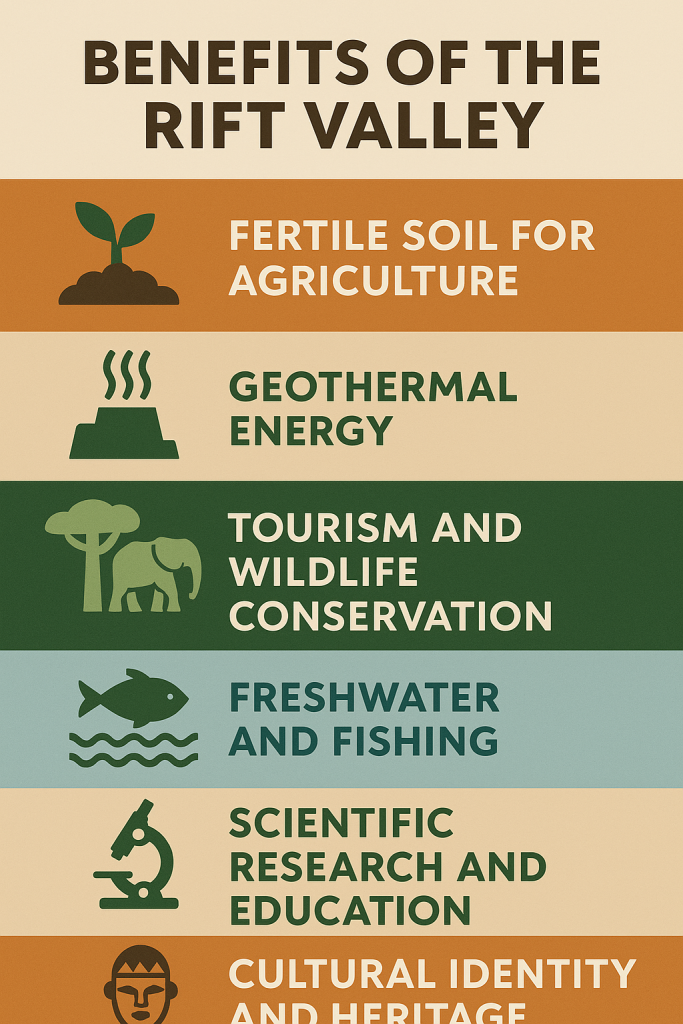
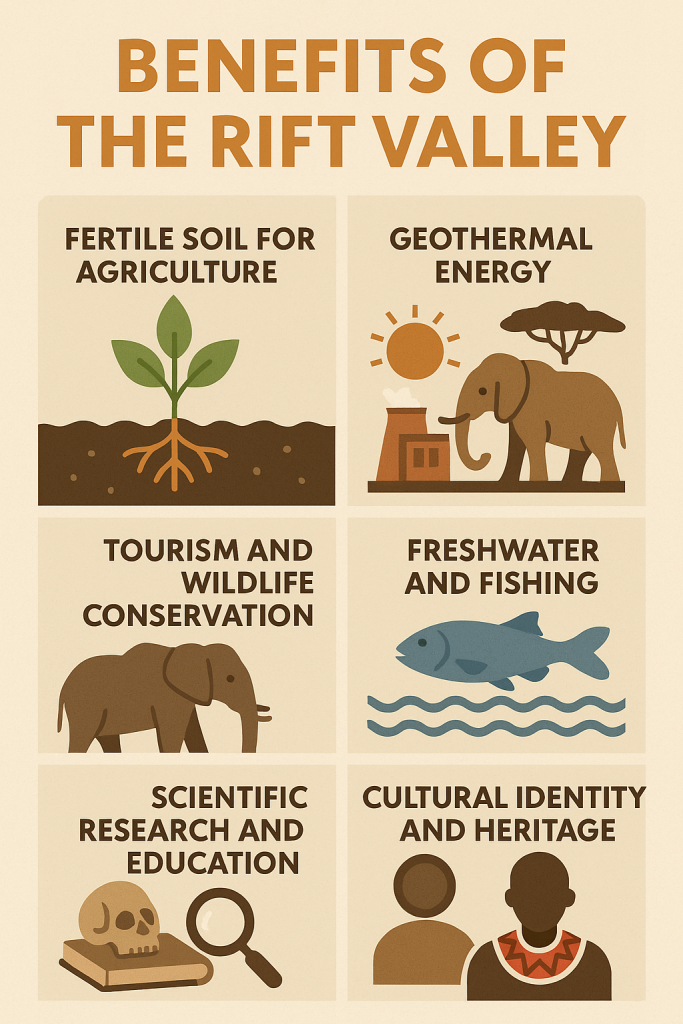
Conclusion
I’m glad you’ve found a place where you can explore the world and stay informed with both current and historical insights. Thank you for taking the time to read, and be sure to follow for more engaging articles. I’d love to hear your thoughts—feel free to share your views in the comments section below.

